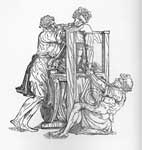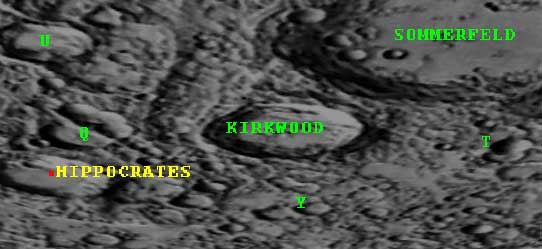.
Griechische Medizin: Hippokrates
...he who desires to practice surgery must go to war, On the Surgery
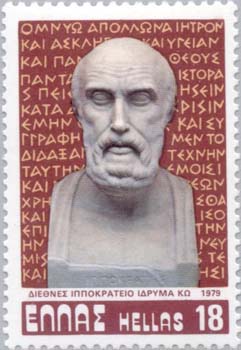
Hippocrates (Ιπποκράτης) (c. 460 BC - c. 377 BC), son of Praxithea (daughter of Phainarete) and Heraclides, is considered as the Father of Medicine. According to Mythology from his mother he was a descendant of Hercules and from his father a descendant of Asclepius. He had at least 2 sons, Draco and Thessalus and one daughter). One of his teachers was Herodikos of Selymbria, a important Greek physician, and another teacher maybe was Democritus of Abdera (there is a story that he was asked by the citizens of Abdera to cure Democritus).
Many centuries before Hippocrates, an Egyptian, Imhotep, called "God of Medicine," "Prince of Peace," was considered as a god (even by the Greeks as Imhoutes) and a healer from 2850 BC up to 500 AD in some places. Hippocrates attempted to demystify healing by emphasizing on the tangible evidence rather than on spiritual causes. Hippocrates asks not "Who causes this sickness?" but rather "By what process does this sickness occur?"
Hippocrates was born at Cos (or Kos) (a Dodecanese Island), about 460 BC, but spent most of his life at Larissa, in Thessaly. He was educated as a physician by his father, and travelled extensively as an itinerant practitioner for several years. His travels in different climates and among many different people undoubtedly tended to sharpen his keen sense of observation. He was a practical physician as well as a theorist, and, withal, a clear and concise writer. "Life is short," he says, "opportunity fleeting, judgement difficult, treatment easy, but treatment after thought is proper and profitable."
Men ought to know that from the brain, and from the brain only arise our pleasures, joys, laughter and jests, as well as our sorrows, pains, griefs and tears. Through it, in particular, we think, see, hear and distinguish the ugly from the beautiful, the bad from the good the pleasant from the unpleasant. It.. makes us mad or delirious, inspires us with fear, brings sleeplessness and aimless anxieties ... In these ways I hold that the brain is the most powerful organ in the human body.
Hippocrates, From “THE SACRED DISEASE”
This is in contrast to the Egyptians who were “cardiocentrists” believing that the heart is the seat of the soul and reason. While they tried to preserve the heart of the dead during their embalming rituals they removed the brain through the nose considering it worthless.
From “A History of Science by Henry Smith Williams”:
Hippocrates, it seems, like modern physicians, sometimes suffered from the ingratitude of his patients. "The physician visits a patient suffering from fever or a wound, and prescribes for him," he says; "on the next day, if the patient feels worse the blame is laid upon the physician; if, on the other hand, he feels better, nature is extolled, and the physician reaps no praise."
Like the four elements an idea developed by Anaxagoras, Aristotle, Hippocrates and others promoted the idea of the four “humors” and their balance to be necessary for health. These four fluids are the blood, the yellow bile, the phlegm and the black bile.
Students of Hippocrates and others mainly from medical schools in Cnidus and Kos wrote different books. From these we have a collection of books known as the Corpus Hippocraticum. Whether the Hippocratic Oath was written directly by Hippocrates is not certain.
Hippocratic Treatments
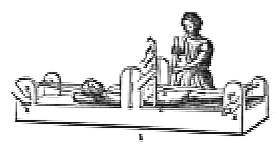

Hippocratic treatment of spine injuries—the rack system and the technique of using gravity to straighten the spine. From Hippocrates: The Genuine Works of Hippocrates (translated by Adams F). London: Sydenham Society, 1844, Vol 2.
The so-called Hippocratic bench or scamnum was converted from a healing device later into a torture device, the rack. (On Joints)
-
Hippocrates had a thorough understanding of fractures. He knew of the principles of traction and counter-traction. He developed special splints for fractures of the tibia, similar to external fixation. Of all the developments that Hippocrates has given to us, his careful clinical observation and rationale thinking must be particularly commended.
Various volumes in the Corpus Hippocrates had relevance to Orthopedics. One such volume is the one on joints. Here dislocation of the shoulder was described together with the various methods used in reduction. There were also sections describing the reduction of acromioclavicular, temporomandibular, knee, and hip and elbow joint dislocations. The correction of clubfoot was described. The problem of infection after compound fractures was described and treated with pitch cerate and wine compresses without forcible bandaging. Probing into any compound fracture was avoided.
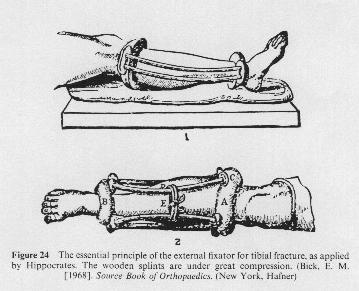
Hippocrates writes in “On the Articulations”:
There are many varieties of curvature of the spine even in persons who are in good health; for it takes place from natural conformation and from habit, and the spine is liable to be bent from old age, and from pains. Gibbosities (or projections backward) from falls generally take place when one pitches on the nates, or falls on the shoulders. In this case some one of the vertebrae must necessarily appear higher than natural, and those on either side to a less degree; but yet no one generally has started out of the line of the others, but every one has yielded a little, so that a considerable extent of them is curved. On this account the spinal marrow easily bears such distortions, because they are of a circular shape, and not angular. The apparatus for the reduction in this case must be managed in the following manner: a strong and broad board, having an oblong furrow in it, is to be fastened in the ground, or, in place of the board, we may scoop out an oblong furrow in the wall, about a cubit above the floor, or at any suitable height, and then something like an oaken bench, of a quadrangular shape, is to be laid along (the wall?) at a distance from the wall, which will admit of persons to pass round if necessary, and the bench is to be covered with robes, or anything else which is soft, but does not yield much; and the patient is to be stoved with vapor, if necessary, or bathed with much hot water, and then he is to be stretched along the board on his face, with his arms laid along and bound to his body; the middle, then, of a thong which is soft, sufficiently broad and long, and composed of two cross straps of leather, is to be twice carried along the middle of the patient's breast, as near the armpits as possible, then what is over of the thongs at the armpits is to be carried round the shoulders, and afterward the ends of the thong are to be fastened to a piece of wood resembling a pestle; they are to be adapted to the length of the bench laid below the patient, and so that the pestle-like piece of wood resting against this bench may make extension. Another such band is to be applied above the knees and the ankles, and the ends of the thongs fastened to a similar piece of wood; and another thong, broad, soft, and strong, in the form of a swathe, having breadth and length sufficient, is to be bound tightly round the loins, as near the hips as possible; and then what remains of this swathelike thong, with the ends of the thongs, must be fastened to the piece of wood placed at the patient's feet, and extension in this fashion is to be made upward and downward, equally and at the same time, in a straight line. For extension thus made could do no harm, if properly performed, unless one sought to do mischief purposely. But the physicians, or some person who is strong, and not uninstructed, should apply the palm of one hand to the hump, and then, having laid the other hand upon the former, he should make pressure, attending whether this force should be applied directly downward, or toward the head, or toward the hips. This method of applying force is particularly safe; and it is also safe for a person to sit upon the hump while extension is made, and raising himself up, to let himself fall again upon the patient. And there is nothing to prevent a person from placing a foot on the hump, and supporting his weight on it, and making gentle pressure; one of the men who is practiced in the palestra would be a proper person for doing this in a suitable manner. But the most powerful of the mechanical means is this: if the hole in the wall, or in the piece of wood fastened into the ground, be made as much below the man's back as may be judged proper, and if a board, made of limetree, or any other wood, and not too narrow, be put into the hole, then a rag, folded several times or a small leather cushion, should be laid on the hump; nothing large, however, should be laid on the back, but just as much as may prevent the board from giving unnecessary pain by its hardness; but the hump should be as much as possible on a line with the hole made in the wall, so that the board introduced into it may make pressure more especially at that especially at that spot. When matters are thus adjusted, one person, or two if necessary, must press down the end of the board, whilst others at the same time make extension and counter-extension as along the body, as formerly described. Extension may also be made with axles, which may either be fastened in the ground beside the bench, or the post of the axles may be attached to the bench itself, if you will make them perpendicular and overtopping (the bench?) a little at both ends, or at either end of the bench. These powers are easily regulated, so as to be made stronger or weaker, and they are of such force, that if one were to have recourse to them for a mischievous purpose, and not as a remedy, they would operate strongly in this way also; for by making merely extension and counter-extension longitudinally, without any additional force, one might make sufficient extension; and if, without making extension at all, one were only to press down properly with the board, sufficient force might be applied in this way. Such powers, then, are excellent which admit of being so regulated, that they can be made weaker and stronger as required. And the forces are applied in the natural way; for the pressure above forces the displaced parts into their place ...
Bladder and urethra stones
Matei Andreoiu from University of Western Ontario describes the treatment for stones in the bladder and urethra:
“The patient suffering from the stone was laid back on a table, with a stack of thick rugs providing some back support and preventing him from lying completely flat on the surface. His hips were flexed and the thighs pulled back, usually being tied to the neck or body to keep them in that position. The arms and hands were laid on top of the flexed thighs and also bound to them. Finally, the feet were pulled backward and outward and held tightly on each side by the cutter’s assistants, men of strong physical attributes. Often, assistants were also needed to hold the thighs. The resulting position of the patient offered an unobstructed access to the perineal area, the theater of operation for the lithotomist. The cutter’s main assistant then pressed firmly with a closed fist on the left side of the abdomen so as to induce the stone to come within reach of the operator. The surgeon then introduced into the rectum the index and middle fingers of his left hand, which were well oiled and had their nails pared. The fingers were carried upward and attempted to feel for the stone within the bladder. Once contact had been made, the fingers attempted to bring the stone, along with the wall of the bladder along which it was situated, into the perineal area between the rectum and penis. Having reached this place, the stone could be more easily visualized as a discernible bulge in the perineum. An incision was then made to the left of the raphe and carried inward through the prostate and into the membranous urethra and bladder neck. Attempts were then made to quickly remove the stone using the fingers of the hand or primitive forceps.”
CUTTING FOR THE STONE: LITHOTOMY THROUGH THE AGES, The Proceedings of the 10th Annual HISTORY OF MEDICINE DAYS, 2001, Calgary, CA.
Hippocratic Oath
|
Όμνυμι Απόλλωνα ιητρόν και Ασκληπιόν και Υγείαν |
I swear by Apollo the physician and Aesculapius, and Health, and Panaceia (All Heal), and all the gods and goddesses, that, according to my ability and judgement, I will keep this Oath and this stipulation. |
Hippocrates was born in the golden Era as Aulus Gellius, a Roman rhetorician of the Second Century A.D describes:
Then the great Peloponnesian War began in Greece, which Thucydides has handed down to memory ... During that period Sophocles, and later Euripides, were famous and renowned as tragic poets, Hippocrates as a physician, and as a philosopher, Democritus; Socrates the Athenian was younger than these, but was in part their contemporary. (Noctes AtticaeXVII.21, 16-18).
Hippocrates and cancer
Hippocrates uses the name karkinos (Greek words for "crab") to diseases that includes cancers of the breast, skin, stomach and uterus. The Latin word for crab is cancer.
Hippocratic face
Hippocrates described the face (now called Hippocratic face or facies Hippocratica ) of a person who died after long sickness, excessive evacuations, excessive hunger, and the like. The nose is pinched, the eyes are sunk, the temples hollow, the ears cold and retracted, the skin of the forehead tense and dry, the complexion livid, the lips pendent, relaxed, and cold .
Hippocras
a beverage made of wine and a mixture of spices that is named after Hippocrates. It has been served throughout the centuries for both as medicine and enjoyment by many different European cultures. The types of Hippocras and the spices and other ingredients used differ from culture and time period.
QUOTES by Hippocrates
Wherever the art of medicine is loved, there also is love for humanity.
Corpus Hippocraticum
BOOKS of Hippocrates (Hippocrates here means he and his school or followers, even if some consider that even his students did not understand always correctly their teacher and thus we have some contradictions), a collection of books mainly from 420 – 350 BC probably as classified in the Library of Alexandria around 280 BC
- Aphorisms
- Instruments Of Reduction
- Of The Epidemics
- On Airs, Waters, And Places
- On Ancient Medicine
- On Fistulae
- On Fractures
- On Hemorrhoids
- On Injuries Of The Head
- On Regimen In Acute Diseases
- On The Articulations (or on Joints)
- On The Sacred Disease
- On The Surgery
- On Ulcers
- The Book Of Prognostics
- The Law
- The Oath
The Hippocratic Tradition (PDF File 258 pages, 0.6 MB) ( A critical review of the interpretation of the work of Hippocrates by Galen and other physicians)
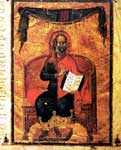
Other Quotes
937 BC. The Argonautic expedition. Prometheus leaves Mount Caucasus, being set at liberty by Hercules. ..... Aesculapius and Hercules were Argonauts, and Hippocrates was the eighteenth from Aesculapius by the father's side, and the nineteenth from Hercules by the mother's side; and because these generations, being noted in history, were most probably by the chief of the family, and for the most part by the eldest sons, we may reckon 28 or at the most 30 years to a generation: and thus the seventeen intervals by the father's side and eighteen by the mother's, will at a middle reckoning amount unto about 507 years, which being counted backwards from the beginning of the Peloponnesiean war, at which time Hippocrates began to flourish, will reach up to the time where we have placed the Argonautic expedition. Sir Isaac Newton, A short chronicle: From the First Memory of things in Europe to the Conquest of Persia by Alexander the Great
Recently Greek archaeologists discovered in Abdera evidence of a skilled surgeon who practiced skull surgery centuries before Hippocrates. http://www.archaeology.org/0603/abstracts/surgery.html/ , Medical instruments excavated at Abdera
LINKS
Examples of Ancient Greek Medical Knowledge (Including Hippocrates)
The illness of Antiochus
Galen
Dioscorides
Artemidorus
Dissections
History of anatomy in ancient times
Greek Medicine By Charles Singer
University of Adelaide > Library > eBooks, Hippocrates Works translated by Francis Adams read | download
The Pulse of Generations:Plato, Aristotle, and "Hippocrates" on the Heart
Tuberculosis had already been mentioned by Hippocrates
HOMEOSTASIS: The Ancient Greek Origin of a Modern Scientific Principle (PDF File)
First printed editions of the Hippocratic Collection
Hippocrates Stamps
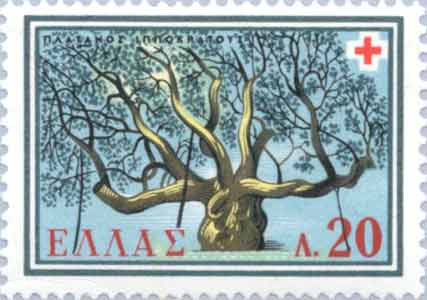
The plane Tree of Hippocrates
- Hippocrates (YEMEN)
- Hippocrates and Avicenna (IRAN)
- Hippocrates and Avicenna (SYRIA)
- The Tree of Hippocrates (GREECE)
- Hippocrates (SAN MARINO and AUSTRALIA)
- Hippocrates (HUNGARY and TRANSKEI)
Ancient Medicine (Sciences of Antiquity Series)
London and New York: Routledge, 2004. Pp. xiv, 486; ills. 31, maps & plans 4. ISBN 0-415-08611-6
Robert E. Adler, Medical Firsts : From Hippocrates to the Human Genome , Wiley 2004, ISBN: 0471401757
Helen King , Hippocrates' Woman: Reading the Female Body in Ancient Greece , Routledge,1998 , ISBN 0415138957
Marketos SG, Skiadas P: Hippocrates. The father of spine surgery. Spine 24:1381-–1387, 1999
| Ancient Greece
Science, Technology , Medicine , Warfare, , Biographies , Life , Cities/Places/Maps , Arts , Literature , Philosophy ,Olympics, Mythology , History , Images Medieval Greece / Byzantine Empire Science, Technology, Arts, , Warfare , Literature, Biographies, Icons, History Modern Greece Cities, Islands, Regions, Fauna/Flora ,Biographies , History , Warfare, Science/Technology, Literature, Music , Arts , Film/Actors , Sport , Fashion --- |


